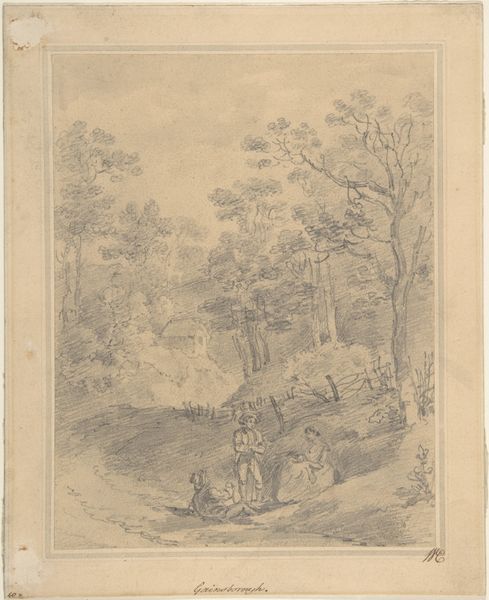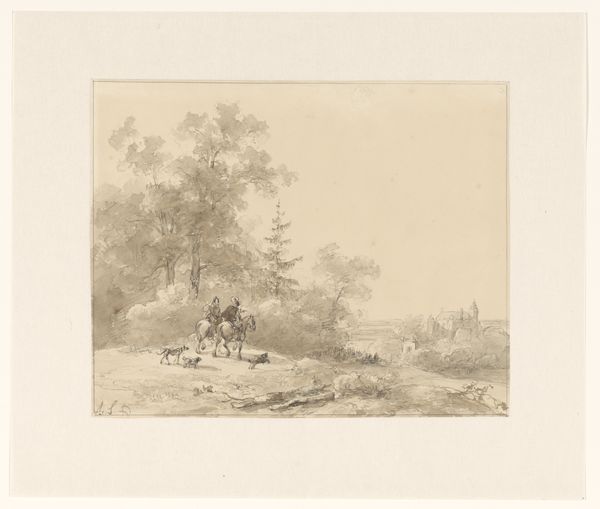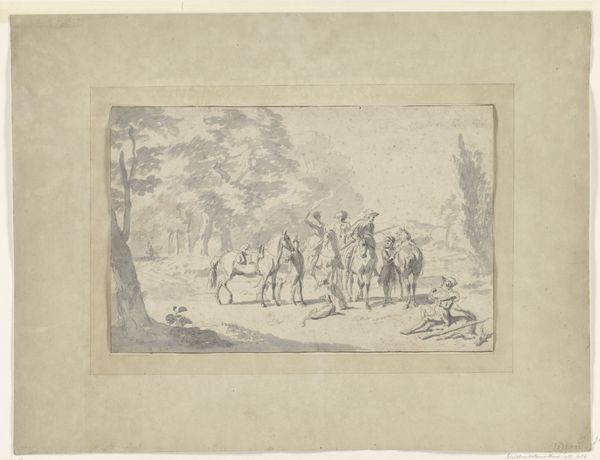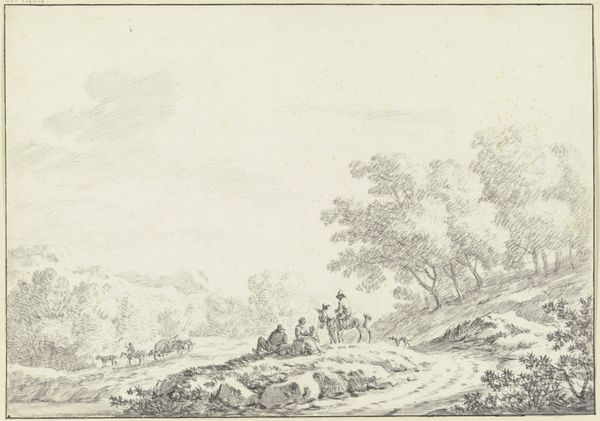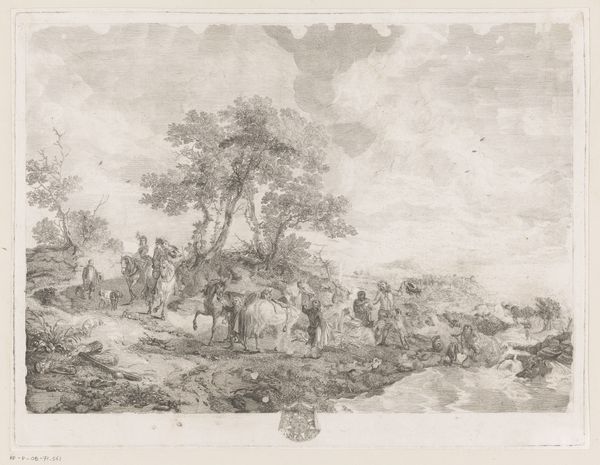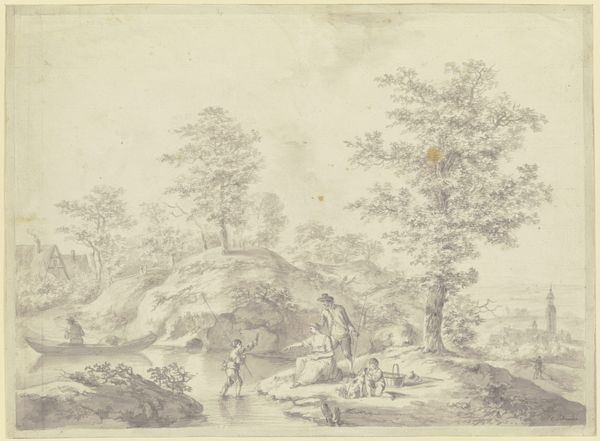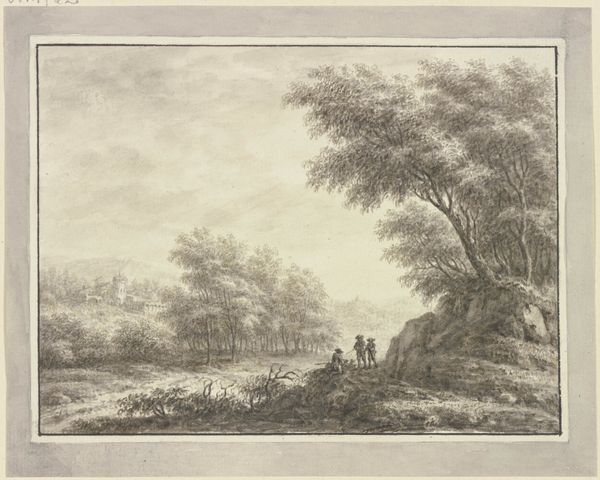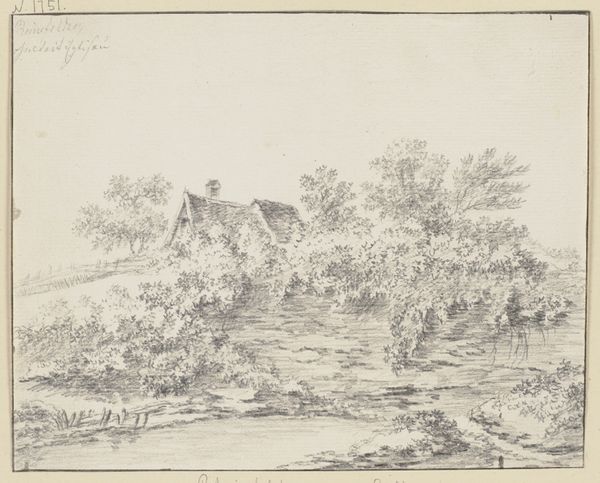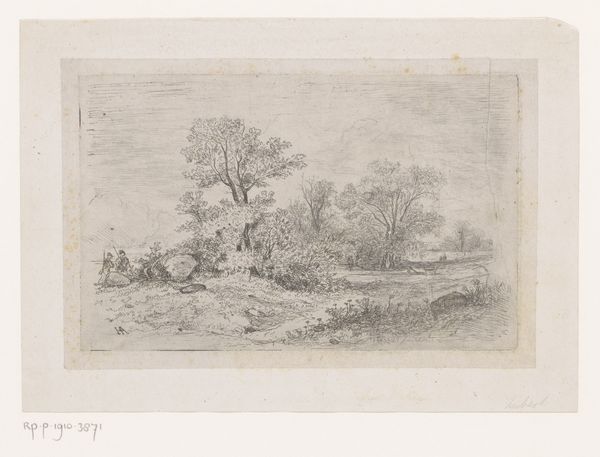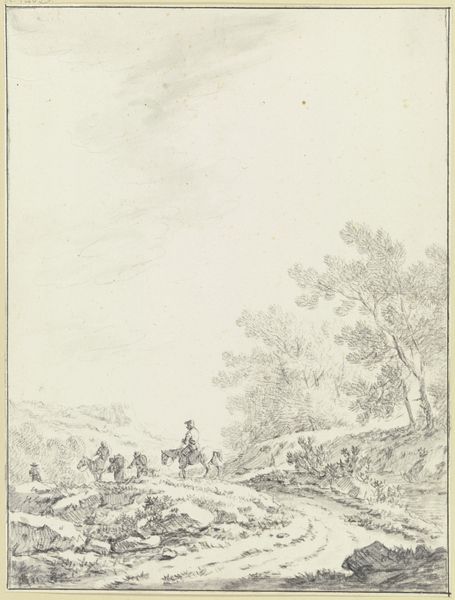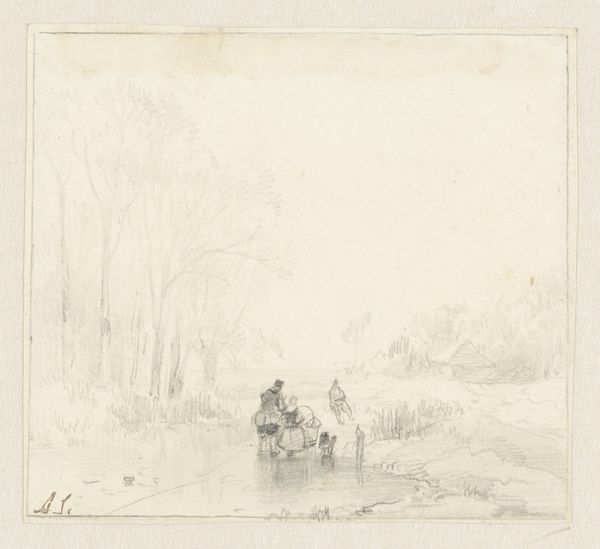
drawing, pencil, graphite
#
drawing
#
landscape
#
etching
#
figuration
#
pencil
#
graphite
#
history-painting
#
realism
Copyright: Public Domain
Curator: We're looking at Wilhelm Lindenschmit the Elder's "Group of Riders at the Edge of the Forest" housed here at the Städel Museum. It is a drawing, created with pencil and graphite, exemplifying realism through a landscape style. Editor: The immediate impression is one of pursuit, but also distance. The muted tones give a ghostly feel to the scene, like a half-remembered dream about a hunt. Curator: Indeed. Note how Lindenschmit's rendering of light and shadow, particularly the diffuse illumination filtering through the trees, contributes significantly to the atmosphere. The etching precisely models tone and gives clarity to form. Editor: And this sense of distance, this "ghostliness," perhaps speaks to the social realities of hunting as a class-based activity? Were ordinary people allowed to hunt? It highlights access and privilege, doesn’t it? Hunting, with its gendered dynamic between those on horseback and those caught in-between, is also an imperialistic conquest, not merely entertainment. Curator: While context undoubtedly informs interpretation, consider too how Lindenschmit composes the scene. The positioning of the riders on the periphery, coupled with their diagonal trajectory across the visual field, propels the viewer's eye through the picture plane, instilling a sense of restless dynamism. Note the lack of color only emphasizes a stark composition through shape and placement. Editor: Restless dynamism or perhaps an active violation? I agree with your reading, but I consider these formal qualities inseparable from historical context. The scene makes me consider both class structures but also ideas around consumption and exploitation in our present time. It’s uncomfortable in some respects. Curator: Fair enough. But in emphasizing purely structural elements, it reveals the artist’s aesthetic choices, and a broader artistic strategy—that perhaps transcends immediate societal commentary. The stark tonal values reinforce the visual narrative. Editor: The tonal values may tell us that a darker history of land use. Thanks for this careful attention; this piece, seemingly straightforward, provokes challenging questions. Curator: Agreed. Hopefully, this discussion prompts further engagement and analysis.
Comments
No comments
Be the first to comment and join the conversation on the ultimate creative platform.
